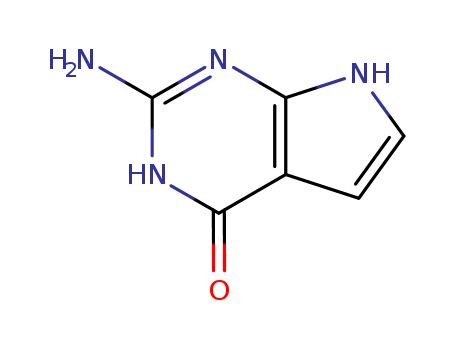10.1021/ol9007537
The research describes a facile synthetic approach to 7-deazaguanine nucleosides, which are compounds that can be used for structural and stability studies of DNA, DNA fluorescence labeling, sequencing, and the production of DNA-based nanoarrays. The study aimed to overcome the challenges in synthesizing 5-substituted 2-amino-3H-pyrrolo[2,3-d]pyrimidin-4(7H)-one nucleosides by developing an efficient route that avoids the need for converting the nucleoside core into a 4-chloro derivative prior to sugar coupling. The researchers utilized ω-substituted aldehydes, 2,6-diaminopyrimidin-4(3H)-one, Boc2O (tert-butyloxycarbonyl anhydride), and 1-chloro-2-deoxy-3,5-di-O-p-toluoyl-R-D-erythro-pentofuranose in their synthesis process. The conclusions of the study highlight the successful development of a convenient, efficient, and general route to 5-substituted 2-amino-7-((2R,4R,5R)-tetrahydro-4-hydroxy-5-(hydroxymethyl)furan-2-yl)-3H-pyrrolo[2,3-d]pyrimidin-4(7H)-ones, which includes the formation of key O4-t-Bu ether intermediates and demonstrates the potential for preparing guanine nucleosides. The Boc protection strategy proved to be efficient for the preparation of these nucleosides with sensitive functionalities, as the Boc and O4-t-butyl groups could be effectively removed under mild conditions.





